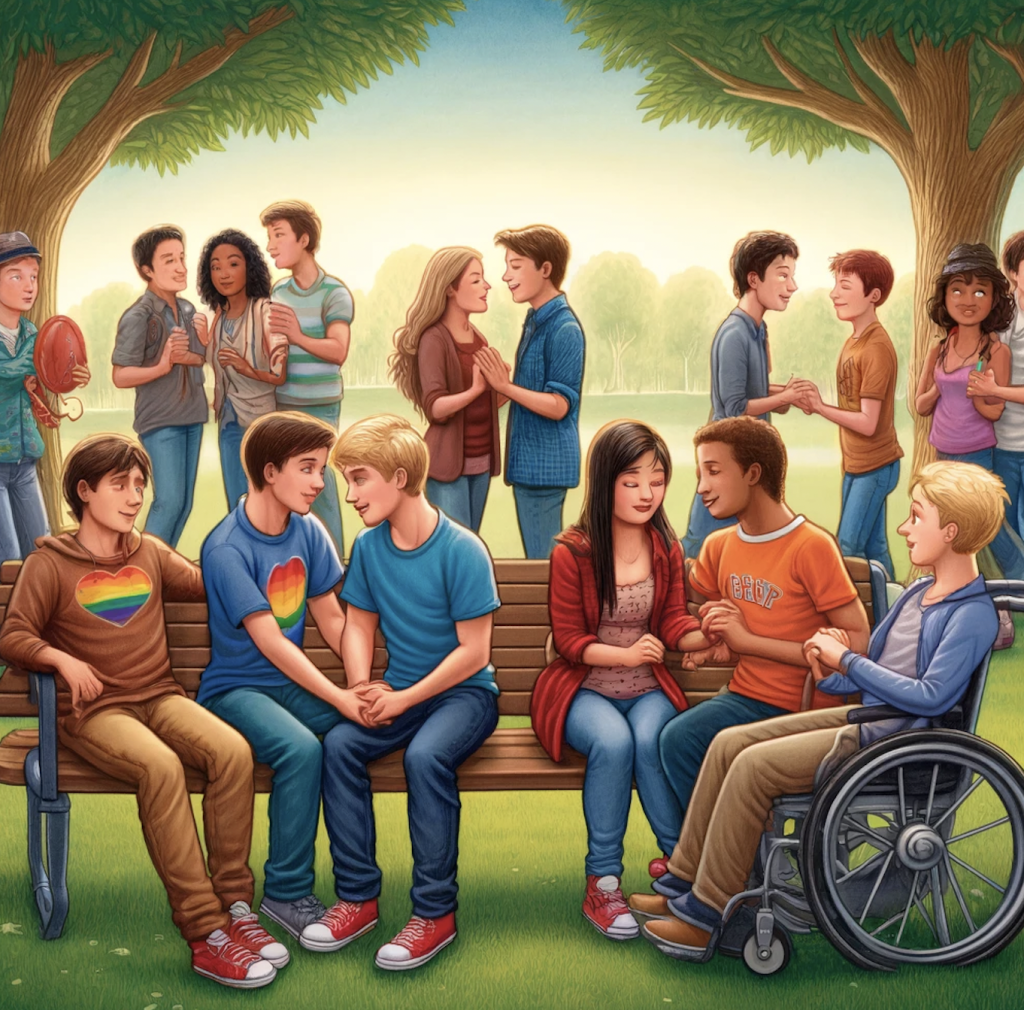Friendships & Romantic Relationships

Image Source: Chat GPT 4
Friendships play a critical role in the social and emotional development of children and adolescents. They provide a context for developing a range of social competencies, including communication skills, empathy, and conflict resolution skills. Moreover, friendships offer opportunities for exploring identity, developing a sense of belonging, and acquiring social status In adolescence, romantic relationships also begin to play a role in identity formation, social-emotional development, and an understanding of intimacy and relationships (Lally & Valentine-French, 2019).
In early childhood, children’s understanding of friendship is concrete and self-centered. Friends are playmates who share immediate activities and experiences. Friendships are formed based on proximity and common interests such as liking the same games or TV shows. These early friendships provide a training ground for learning basic social skills such as taking turns, sharing, and cooperating (Lally & Valentine-French, 2019). Even though these relationships might seem simple or unstable (best friends can change from day to day), they are important for children’s social development.
By middle childhood, children tend to develop a more mature understanding of friendship. They often begin to value personal qualities such as trustworthiness and kindness in their friends. Friendships typically become based on mutual support and shared secrets rather than solely on shared activities. Children at this stage may become more selective in choosing friends and are more likely to have stable friendships. They generally start to understand that disagreements do not necessarily mean the end of a friendship, and they may begin to use more complex strategies for conflict resolution (Lally & Valentine-French, 2019).
With the onset of adolescence, friendships become more emotionally intimate and complex. Friends provide critical support as adolescents grapple with physical, emotional, and identity changes. Adolescents often confide in friends more than family, and friendships increasingly occur across different settings (school, online, community). Peers become a major source of social norms, impacting behavior, appearance, and interests. Higher importance is placed on group belonging, and friendships can become influenced by peer group dynamics (Lally & Valentine-French, 2019).
Romantic relationships also begin to play a role in social and emotional development during adolescence. Early adolescence is typically marked by the onset of romantic interest and attraction, but at this stage, romantic relationships are often short-lived and based more on the idea of a relationship than on a mutual understanding or emotional intimacy. Crushes and infatuations are common, and romantic interactions often take place in group settings such as group dates or parties (Lally & Valentine-French, 2019). These early experiences with romance help adolescents learn basic social skills. They begin to navigate the complexities of romantic feelings and relationships under the safe and low-pressure conditions of group interactions.
As adolescence progresses, romantic relationships often become more central to their social lives. Relationships tend to last longer and involve more emotional commitment. They start dating more seriously, often in dyadic settings (i.e., going out as a couple), though group socializing remains important. Teenagers between 15–16 years old will often experience their first “love” relationship and may gain communication, conflict resolution, and emotional intimacy skills. Toward the end of high school, romantic relationships often become more mature and may resemble adult relationships in many ways. Emotional intimacy deepens, and relationships can become more serious and committed. Some adolescents may begin to consider long-term plans involving their romantic partner, such as cohabitation or future marriage, and these relationships may have an impact on identity development, decision-making, and future life plans (Lally & Valentine-French, 2019).
Think, Write, Share
- In what ways do friendships provide a context for developing social competencies such as communication skills, empathy, and conflict resolution skills?
- How do peer group dynamics influence friendships during adolescence, and what impact does this have on behavior, appearance, and interests?
- How do early experiences with romance, such as crushes and infatuations in group settings, help adolescents learn basic social skills and navigate the complexities of romantic feelings and relationships?
Application Challenge
Create a timeline of your friendships from early childhood to the present. Include at least three significant friendships from different life stages and briefly describe the basis of each friendship (e.g., shared activities, trustworthiness, mutual support). Using information from the text, identify and explain changes in the criteria you used to form friendships and the roles these friendships played in your social development.